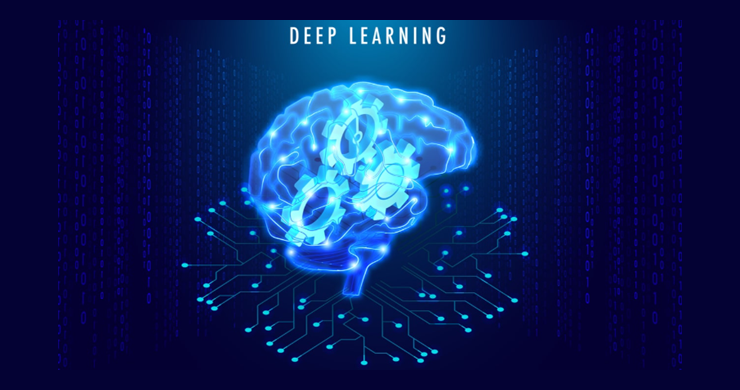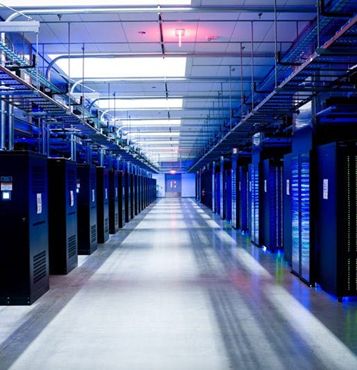
What is deep learning?
Deep learning is a subset of machine learning, which is essentially a neural network with three or more layers. These neural networks attempt to simulate the behavior of the human brain—albeit far from matching its ability—allowing it to “learn” from large amounts of data. While a neural network with a single layer can still make approximate predictions, additional hidden layers can help to optimize and refine for accuracy.
Deep learning vs. machine learning
Machine learning algorithms leverage structured, labeled data to make predictions—meaning that specific features are defined from the input data for the model and organized into tables. This doesn’t necessarily mean that it doesn’t use unstructured data; it just means that if it does, it generally goes through some pre-processing to organize it into a structured format.
Deep learning eliminates some of data pre-processing that is typically involved with machine learning. These algorithms can ingest and process unstructured data, like text and images, and it automates feature extraction, removing some of the dependency on human experts. For example, let’s say that we had a set of photos of different pets, and we wanted to categorize by “cat”, “dog”, “hamster”, et cetera. Deep learning algorithms can determine which features (e.g. ears) are most important to distinguish each animal from another. In machine learning, this hierarchy of features is established manually by a human expert.
How deep learning works
Deep learning neural networks, or artificial neural networks, attempts to mimic the human brain through a combination of data inputs, weights, and bias. These elements work together to accurately recognize, classify, and describe objects within the data.
Deep neural networks consist of multiple layers of interconnected nodes, each building upon the previous layer to refine and optimize the prediction or categorization. This progression of computations through the network is called forward propagation. The input and output layers of a deep neural network are called visible layers. The input layer is where the deep learning model ingests the data for processing, and the output layer is where the final prediction or classification is made.
Another process called backpropagation uses algorithms, like gradient descent, to calculate errors in predictions and then adjusts the weights and biases of the function by moving backwards through the layers in an effort to train the model. Together, forward propagation and backpropagation allow a neural network to make predictions and correct for any errors accordingly. Over time, the algorithm becomes gradually more accurate.
The above describes the simplest type of deep neural network in the simplest terms. However, deep learning algorithms are incredibly complex, and there are different types of neural networks to address specific problems or datasets. For example,
- Convolutional neural networks (CNNs) : Used primarily in computer vision and image classification applications, can detect features and patterns within an image, enabling tasks, like object detection or recognition. In 2015, a CNN bested a human in an object recognition challenge for the first time.
- Recurrent neural network (RNNs) : Are typically used in natural language and speech recognition applications as it leverages sequential or times series data.
Deep learning hardware requirements
Deep learning requires a tremendous amount of computing power. High performance Graphical Processing Units (GPUs) are ideal because they can handle a large volume of calculations in multiple cores with copious memory available. However, managing multiple GPUs on-premises can create a large demand on internal resources and be incredibly costly to scale.
Market :
Deep Learning market size is 10.3 Billion, Market Size Will Achieve USD 415 Billion by 2030 growing at 51.1% CAGR Fueled by the Increasing Adoption of Big Data Analytics – Exclusive Report by Acumen Research and ConsultingApplications :
- Self Driving Cars
- News Aggregation and Fraud News Detection
- Natural Language Processing
- Virtual Assistants
- Entertainment
- Visual Recognition
- Fraud Detection
- Healthcare
- Personalisations
- Detecting Developmental Delay in Children
- Colorisation of Black and White images
- Adding sounds to silent movies
- Automatic Machine Translation
- Automatic Handwriting Generation
- Automatic Game Playing
- Language Translations
- Pixel Restoration
- Photo Descriptions
- Demographic and Election Predictions
- Deep Dreaming
- Law enforcement
- Financial services
- Customer service
- Healthcare
- Banking
- E-commerce
- Drone Technology
- Security
- Industrial Automation

Challenges in Deep Learning
- Lots and lots of data
- Overfitting in neural networks
- Hyperparameter Optimization
- Requires high-performance hardware
- Neural networks are essentially a Blackbox
- Lack of Flexibility and Multitasking